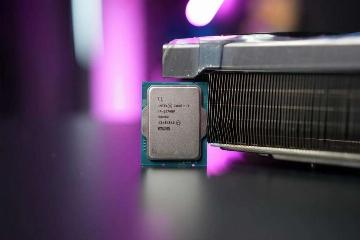Stocks Set to Fall Despite Fed Rate Cuts
Advertisements
In recent times, the sentiment around the American economy has been a rollercoaster, marked by figures and opinions that oscillate between optimism and dire warningsEven Elon Musk, who is known for his outspoken comments, has refrained from criticizing the U.Sgovernment directly, pointing to the Federal Reserve's conservative stance on interest rates as a significant factorOnce an opportunity for economic relief is lost, it will become increasingly difficult for the country to recoverOne cannot ignore the implications of prolonged stagnation in monetary policy in a highly volatile market.
There's a commonly held adage that highlights three major asset classes in the world: the American stock market, China's real estate, and Japan's bond marketThese assets are often perceived to have a one-way ticket to growth, seemingly impervious to the unpredictable nature of the market
Advertisements
The story of these markets is one of excess and reliance on perpetual growth, but history offers a more nuanced perspective.
It is essential to understand, however, that markets are inherently unpredictableNo asset can sustain a continuous upward trajectory devoid of the effects of economic cycles, policy shifts, international relations, or other multifaceted influencesAs I have previously discussed, the foundations of financial knowledge often stem from time-tested principles, rather than fleeting theoretical modelsAlthough the latter can provide guidance in specific circumstances, they often lack efficacy in the complex tapestry of real-world markets.
Why do I assert that the current scenario is particularly unfavorable for the U.S.? The Bank of Japan's decision to raise interest rates signifies a pivot in global monetary policy, while China is forging crucial partnerships, such as the one with Saudi Arabia—a stark contrast to the Fed's hesitance in adopting a more accommodative stance
Advertisements
This divergence in approach brings into question the sustainability of American economic dominance.
The Nikkei Index and the TOPIX Index in Japan experienced a brief resurgence, reclaiming losses after a significant plunge of over 12% in response to market volatilityNonetheless, this recovery was short-lived, as selling pressure reemerged, revealing a fragile market sentiment beneath a surface of volatility viewed by investors.
Moreover, the Bank of Japan's Vice Governor reassured markets by stating that maintaining an accommodative policy was necessary during times of turbulence, emphasizing that interest rates would not rise amid instabilityThe Bank planned to purchase a substantial amount of government bonds—875 billion yen, approximately $60 billion—to provide liquidity, reflecting proactive measures to stabilize the Japanese market.
The exchange rate fluctuations between the yen and the dollar, both carried on the back of these policies, underscore the precariousness of their current arrangement; Japan, while considered a subordinate player in the global economic arena to the U.S., is gearing up for a more independent monetary policy to avoid the pitfalls of its previous deference.
Within the U.S., the facade of prosperity belies underlying crises
Advertisements
The macroeconomic leverage remains on the rise, primarily driven by government-led initiatives, while corporate and household leverage diminishes—this phenomenon indicates a troubling shift, referred to as "leverage transfer." This shift suggests that government spending has become the primary engine of growth, raising critical questions about sustainable economic practices.
The tech sector, often heralded as a pillar of American economic strength, is falteringCompanies such as Supermicro reported earnings that, while exceeding initial expectations, also illustrated the broader issue of dwindling profit margins across the manufacturing spectrumThe aftermath was reflected in significant stock price drops for key players like Nvidia, showcasing the market's skepticism about sustaining valuations if reliant primarily on financial reporting without substantial performance backing.
The perception among investors has shifted as many have begun to recognize that the so-called star technology stocks within the U.S
- Stocks on Brink? Fed Rate Hike Debate Heats Up
- Transaction Banks Tap Platform Strategy for Growth
- Strong Demand for Global Electric Vehicle Market
- Treasury Yields Hit New Low Amid Wealth Shift
- Crossroads of Wealth: Where Do You Stand?
appear to be crafted by the Fed’s monetary policies—an artificial creation that risks crumbling under economic scrutinyThe genuine health of these companies must be critically examined in a landscape fraught with uncertainty.
Recent declines in Intel’s market capitalization serve as a glaring illustration of challenges facing American manufacturingThe company's steep fall showcases not just operational inefficiencies but reveals fundamental issues with the government's over-reliance on policies to spur technological advancementThe anticipated delays in TSMC's U.Sfactory project could nullify much of the impact generated by the U.Ssemiconductor legislation.
The essence of the current predicament can be succinctly encapsulated as a contradictory coexistence of high growth, high inflation, high interest rates, and soaring debts
